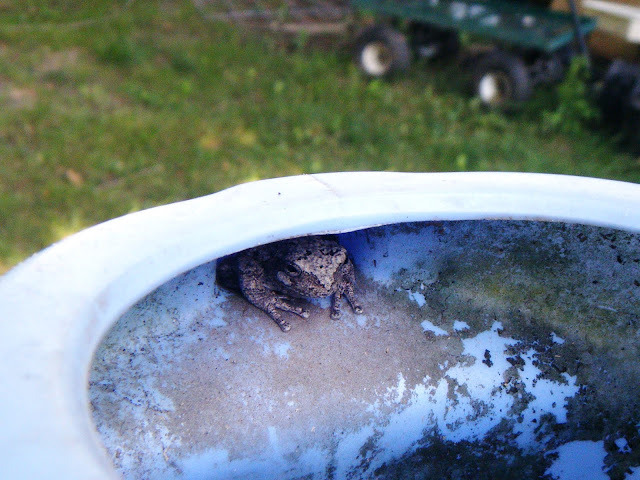Ecological scientists tell us that amphibians, such as frogs, toads and salamanders, are much like the proverbial canary in the coal mine: they give early warning. If there is an ecological problem, those creatures are affected before almost any other animals. If they start disappearing, you know something is wrong in the local ecology. Conversely, a healthy population of amphibians in a given area means the local ecology is healthy, too.
So I am pleased to see the number of frogs, mainly tree frogs, that we have around Dandelion Acres (my wife's provisional name for our homestead). A few weeks ago I discovered that one had decided that the hollow handle of my plastic watering can would be a good hiding spot as he (she?) lay in wait for insects.
 |
| Its natural camouflage does blend in a little with the algae spots in my watering can. |
Then the critter detected my presence.
 |
| Braced to skedaddle. |
I encouraged it to find another ambush spot with a few taps on the side of the can, and it took off.
Then this afternoon I noticed another frog trying to blend in on the bark of a ponderosa pine in development.
 |
| Its color does blend in with the green of the needles a bit, but the brown of the bark is another matter. |
We also see them hopping across the parking apron, evading our dogs and the neighbors' cats, and moving thru the grass. Earlier in the season they gave a nightly concert from our above-ground pool. (Which the local green herons seemed to regard as their own smorgasbord.)
Wherever they are, I always like to see that our ecological "coal mine" has healthy "canaries".
:-) :-) :-)





